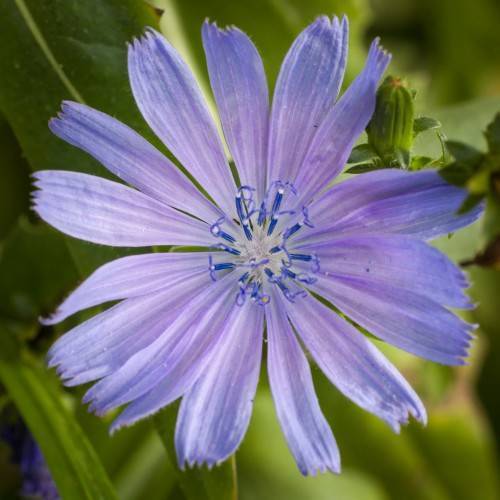
chicory
Cichorium intybus
Cycle:
Herbaceous Perennial
Watering:
Average
Hardiness Zone:
3 - 8
Flowers:
Flowers
Sun:
Full sun
Leaf:
Yes
Growth Rate:
Low
Maintenance:
Moderate
Drought Tolerant:
Yes
Salt Tolerant:
Yes
Invasive:
Yes
Care Level:
Medium
watering
Chicory plants should be watered once or twice per week, depending on the weather. In warmer temperatures, more frequent watering is necessary. If temperatures are very hot, it is best to water at least twice per week. In cooler temperatures, once per week should be enough. When watering, the soil should be allowed to dry out between waterings, ensuring that the chicory plant does not become waterlogged. The soil should be kept moist, but it should not be overly saturated. If the chicory plant is in a container, additional watering may be needed to replace water lost through evaporation.
sunlight
Chicory (Cichorium intybus) generally requires at least 6 hours of direct sunlight a day to stay healthy and produce its vibrant blue flowers. Its ideal sunlight conditions are determined by the region; however, it is best grown in areas with full sun and some shade during the midday when temperatures are high. For best results, chicory should receive full morning sun and partial afternoon shade in order to limit stress from afternoon rays and extreme temperatures.
pruning
Chicory is a perennial plant, and it should be pruned annually in late fall or early winter. Pruning should be done before the ground freezes and plants become dormant. Cut the top 2-thirds of the super upright stems that have produced flowers the previous season and remove dead flowers and foliage to promote new growth. If the foliage of your chicory becomes too dense, you can trim it back further as needed. Fertilize the Chicory plants in early spring with a balanced fertilizer to promote optimum health and growth.
